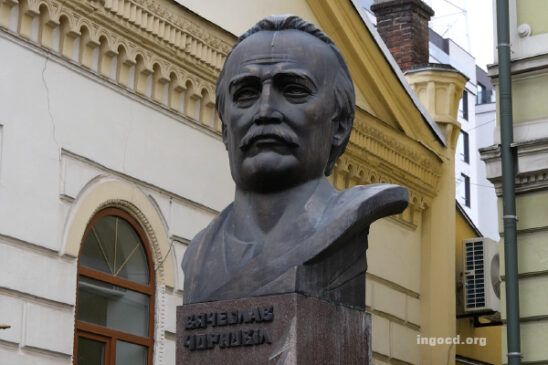NATO’s strategy for digital transformation

The rapid evolution of digital technologies has profoundly transformed our societies, our economies, and is having a significant impact on modern warfare. NATO’s Digital Transformation Implementation Strategy will help address the need for technological and cultural transformation, leveraging data and artificial intelligence to drive this digital transformation.
At the Madrid Summit in 2022, Allies agreed on the need to strengthen NATO’s technological edge as a means of reinforcing their collective deterrence and defence. The strategy will guide the Alliance to harness technology more effectively, helping it to mitigate against threats, support decision-making, and ultimately drive transformation. It provides a roadmap that outlines how, by 2030, NATO will leverage digital technologies in all its areas of operations to foster its technological edge in executing its core tasks of deterrence and defence. Guiding NATO’s development in four capability areas – people, process, technology and data – through multiple lines of effort, the strategy pinpoints key deliverables in the implementation of digital transformation.
The strategy highlights four key outcomes for the Alliance:
Strength across all domains – maritime, land, air, cyberspace and space.
Elevated digital standards to ensure NATO remains future-proof.
A more advanced data picture using real-time analytics.
Enhanced decision-making supported by more effective data sharing.
The summary of NATO’s Digital Transformation Implementation Strategy is available here:
Background
1. In the 2022 Strategic Concept, Allies affirmed the need to enhance NATO’s technological edge to further strengthen deterrence and defence, and bolster the Alliance’s commitment for collective defence. Moreover, Allies committed to adapt the NATO Command Structure for the information age, leveraging digital technology to ensure military effectiveness.
2. NATO’s Digital Transformation Vision1 – agreed in October 2022 – establishes the will and the broad perspectives of how NATO will take forward the adoption of technologies to conduct multi-domain operations, ensure interoperability across all domains, enhance situational awareness, and facilitate political consultation and data- driven decision-making.
Aim
3. NATO’s Digital Transformation Vision will be implemented through this Digital Transformation Implementation Strategy, which aims to transform the way NATO operates, by exploiting the potential offered by modern technologies and associated ways of operating, while addressing existing gaps. This effort will be a continuous, multifaceted process, spanning over multiple years, addressing people, processes and technology, and informed by NATO’s Horizon Scanning.
4. This Strategy’s success is predicated on the contributions of Allies and the implementation of a new paradigm for cooperation, which also extends to Industry, civil society and academia2, on relevant areas, such as the establishment of an Alliance Data Sharing Ecosystem, the Digital Backbone, the Digital Interoperability Framework, and relevant NATO Architectures.
Strategic Outcomes
5. The Digital Transformation Implementation Strategy is a change initiative that combines modernisation, optimisation and transformation efforts3 – across the dimensions of people, processes and technology – to achieve the following strategic outcomes:
5.1. Multi-Domain Operations Enabled Alliance: Supremacy on the battlefield requires dominating all domains, combined with the orchestration of military activities, synchronization of non-military activities, and the delivery of converging effects at the speed of relevance. The full realisation of Multi-Domain Operations (MDO), enabled by a Digital Backbone that facilitates seamless Command and Control (C2) across all domains, will be achieved by the following foundational elements: Enhancing Situational Awareness, Orchestrating Operational Effects, Embedding Risk Management and Digital Mission Assurance, Adopting New Capabilities, Aggregating Data, Bolstering Security and Protection of Data. MDO implementation will build upon the ongoing planning efforts towards the implementation of the Concept for the Deterrence and Defence of the Euro-Atlantic Area (DDA).
5.2. Ensured Interoperability across all domains: Digital Interoperability is the essential element enabling NATO’s Digital Transformation. It requires modern standards and coherent governance processes to ensure that capabilities remain future-proof, coherent and interoperable across the Alliance, with security and interoperability engineered by design, and based on reliable, modern approaches.
5.3. Enhanced situational awareness: Digital Transformation will enhance situational awareness in support of political and military leaders to anticipate risks and expedite crisis response. It will leverage a combination of sensor networks, multiple data sources and advanced analytics to present a real-time consolidated multi-domain picture.
5.4. Enhanced political consultation and data-driven decision-making: Faster and better-informed decision-making requires persistent access to trusted data of all (military and political) domains, advanced analytics and consultation services for the benefit of the Alliance, and enhanced consultation and decision-making processes, underpinned by an Alliance Data Sharing Ecosystem.
Strategic Deliverables
6. Digital Transformation will be implemented through a continuous, consistent, clearly governed process that requires mobilising human and financial resources proportionate to the level of ambition. This Strategy includes cyber security and cyber defence aspects in relevant Lines of Efforts (LoE) and connects them to NATO’s and Allies’ corresponding initiatives.
7. To achieve the Digital Transformation Vision’s Goals, the following crucial Strategic Deliverables have been identified.
7.1. Alliance Digital Initiatives: Digital Transformation will leverage the Federated Mission Networking (FMN) Initiative4 to align and synchronize the planning and development of interoperable capabilities among Allies, the NATO Enterprise, partners and international organizations. Digital Transformation also presents an opportunity for the Allies that have already set out on an innovation path to offer their experience and solutions to the Alliance, with the creation of a forum where NATO staff facilitates the development of bilateral or multinational cooperation programmes, and national solutions could be offered and expanded for the Alliance’s benefit.
7.2. Alignment of Programmes: The NATO Enterprise shall work towards aligning and improving the various capability delivery mechanisms to expedite the implementation of programmes.
7.3. Digital-ready Workforce: Digital transformation, leveraging ongoing efforts, will deliver a digital-ready workforce for the NATO Enterprise. This will help develop and implement digital-ready policies, and foster a culture of innovation across the Alliance. In addition to training programmes, the development of a digital-ready workforce will include fellowship programmes, secondments and exchanges between Allies, NATO, the private sector and academia.
7.4. Digital-Ready Combat Forces: A modern, effective NATO Force Structure requires modernised capabilities and trained personnel, primed through national and collective exercises, prepared to exploit the advantage offered by technologies, and ready to successfully operate in MDO scenarios.
7.5. Information and Communications (ICT) Services for a Data-Driven Alliance: Enhancing situational awareness, consultation and decision-making processes requires new ways of cooperation and modern and resilient ICT services that support political and military leaders. The implementation of such services foresees secure access to trusted data, the availability of a single logical environment for data exploitation – offering advanced analytics and AI capabilities – and a data-centric architecture that provides persistent access to ICT services across the Alliance.
7.6. Data-centric Governance: NATO should shape the information environment to ensure operational integrity and the unencumbered, resilient flow of data stemming from diverse but integrated sources. The exploitation of data requires adequate standards for data management, harmonised standards for data sharing, and it should be protected and guided by an appropriate Data Governance framework and controls, and augmented by data management, data science and AI capabilities.
7.7. Digital Interoperability Framework: It is necessary to improve the governance of Allied digital interoperability activities to establish cross-organisational relationships, to streamline processes supporting end-to-end services, and to ensure that both existing and new policies promote interoperability efforts. A common approach will be established for willing Allies to offer ICT services, federate them, and address security, data management and protection requirements. Digital Interoperability goes beyond the development of new technologies and includes innovation, acquisition, operations, and sustainment of legacy products. The implementation of a Digital Interoperability Framework will contribute to the quality of data and ICT services and will create an environment where allies and NATO Enterprise entities can fruitfully cooperate and federate ICT services. In addition, Industry’s role is essential in shaping the standards necessary for promoting full digital interoperability across the Alliance.
7.8. Digital-Ready Processes: Setting fit-for-purpose, agile processes to accelerate the design, acquisition, delivery and operation of the Digital Backbone is critical, together with the imperative to find a balance between innovation requirements and efficient control mechanisms. In line with extant procedures, it is essential that NATO shall redesign, or continue to reform, crucial processes in areas such as political consultation, operations’ and capability planning, procurement, acquisition, and security accreditation, with the ambition to reflect evolving requirements brought about by new trends, and to exploit emerging technology solutions. As a result, policy, doctrine and ways of working in multiple areas will need to be updated.
7.9. Digital Backbone: The development of NATO’s Digital Backbone will be aligned with the NATO 2030 initiative relevant key requirements areas. The Alliance needs data-centric, inter-connected systems, which can integrate easily and securely across the various organizational and national boundaries, in peacetime as well as during missions and operations. This implies that the Digital Backbone will have to provide the technical means to ensure universal connectivity and data transport not just across the traditional domains of operations (Maritime, Land and Air), but also for the new domains of Space and Cyberspace, including Allies and Partners as described in the Alliance Concept for MDO. The Digital Backbone integrates capabilities, connects sensors, effectors and decision makers across military and political spheres, driving integration and interoperability across domains and platforms, and enabling seamless collaboration. It also hosts the Data Fabric that enables users and services to access and process data rapidly and securely at every level. The Digital Backbone’s key components include federated networks, cloud computing, and a design based on a service-oriented architecture paradigm.
7.10. Alliance Data Sharing Ecosystem: Data sharing is an imperative for the Alliance that should be pursued through systematic efforts. Sharing interoperable data to achieve Allied objectives shall become the norm and a shared responsibility for Allies and the NATO Enterprise alike. Initiatives to share data with Allied Industry and research partners will be encouraged and strengthened, as appropriate. To achieve success, data sharing must transcend operational silos and build on the willingness to share of established communities, and leverage initiatives such as the NATO Core Data Framework. It must be driven by intended uses of the data that support Allied policies and strategies, while respecting NATO’s Principles of Responsible Use of AI and Data. In particular, it is vital to stimulate cooperation on sharing training data for realising the Alliance’s data exploitation and AI ambitions, for supporting Allied innovation initiatives such as DIANA, and for strengthening the Alliance’s position vis- à-vis strategic competitors. As result, an Alliance Data Sharing Ecosystem will be established, where data from Allies, the NATO Enterprise, and Industry and research partners, as appropriate, is shared, labelled, connected and exploited.
7.11. Cooperation with Industry and Academia: NATO shall broaden cooperation with partners from Industry and Academia and develop mechanisms for a mutual enriching collaboration. Leveraging ongoing efforts, such mechanisms could include coordinated staff-level engagements with Industry partners, and a framework contract that could address different technology areas, in areas ranging from data science and AI through to quantum computing and space technology.
1 PO(2022)0405
2 Industry, civil society and academia are from Allies and Partner Nations.
3 Including all elements recognized as part of emerging and disruptive technologies.
4 The Federated Mission Networking (FMN) initiative is one of the main constructs to agree on roadmaps and specifications for delivering interoperable capabilities, even though at the current point of time the FMN scope does not yet entail the entirety of Alliance’s interoperability requirements.
Source: nato.int/cps/en/natohq/news_229985.htm?selectedLocale=en
OCD | 22.10.2024
Follow us on social media: Facebook, Twitter, Instagram, YouTube.





